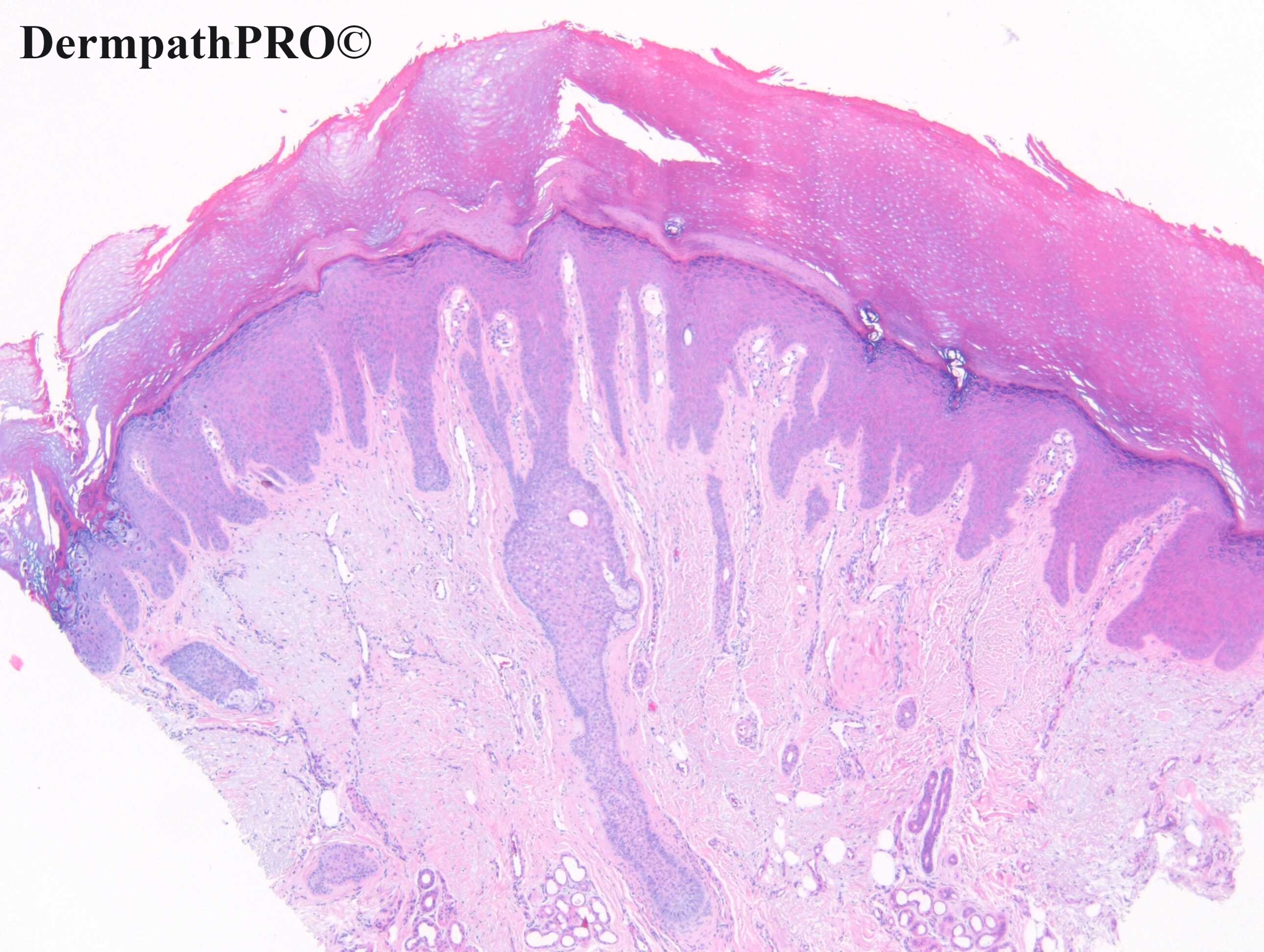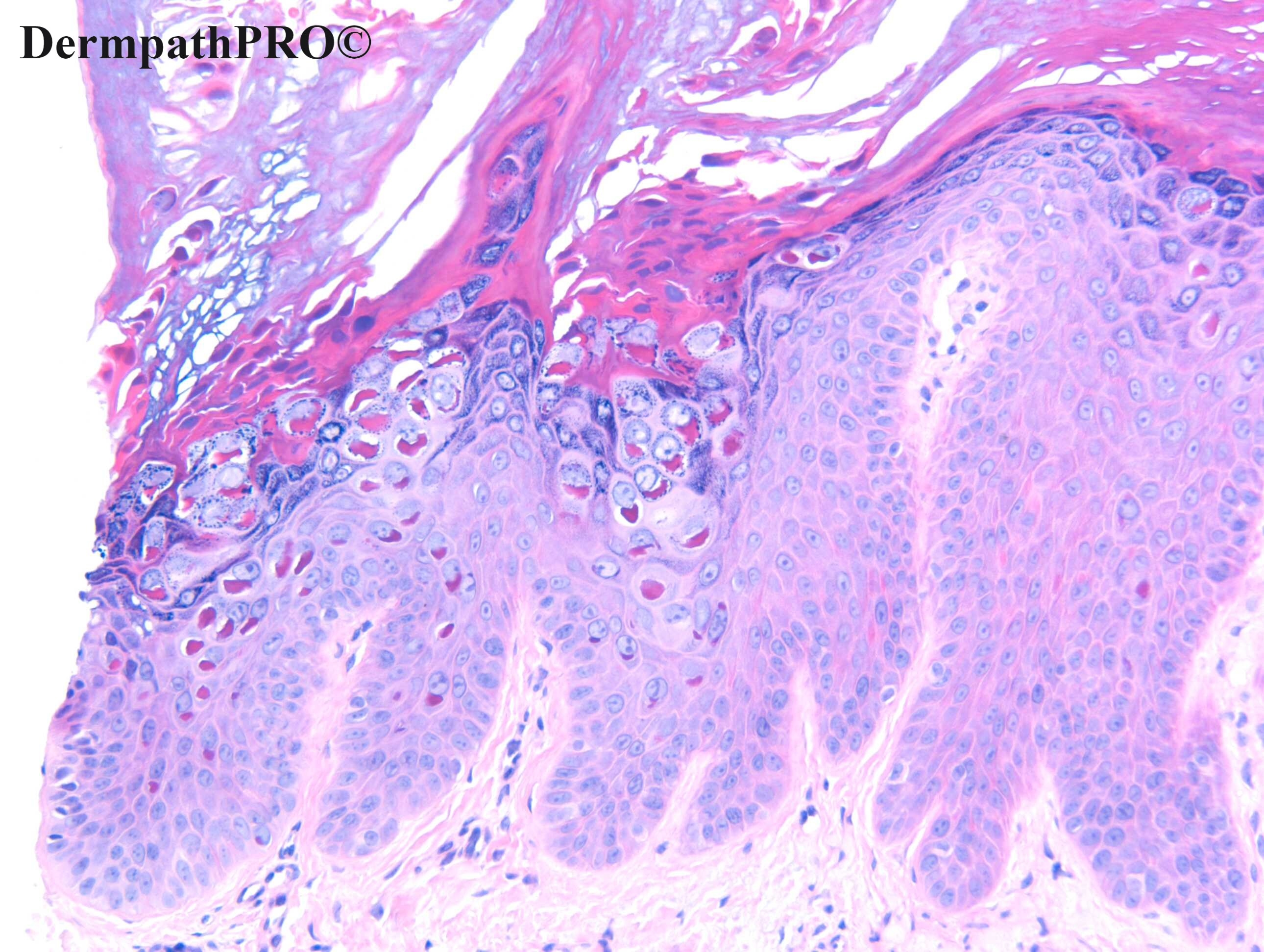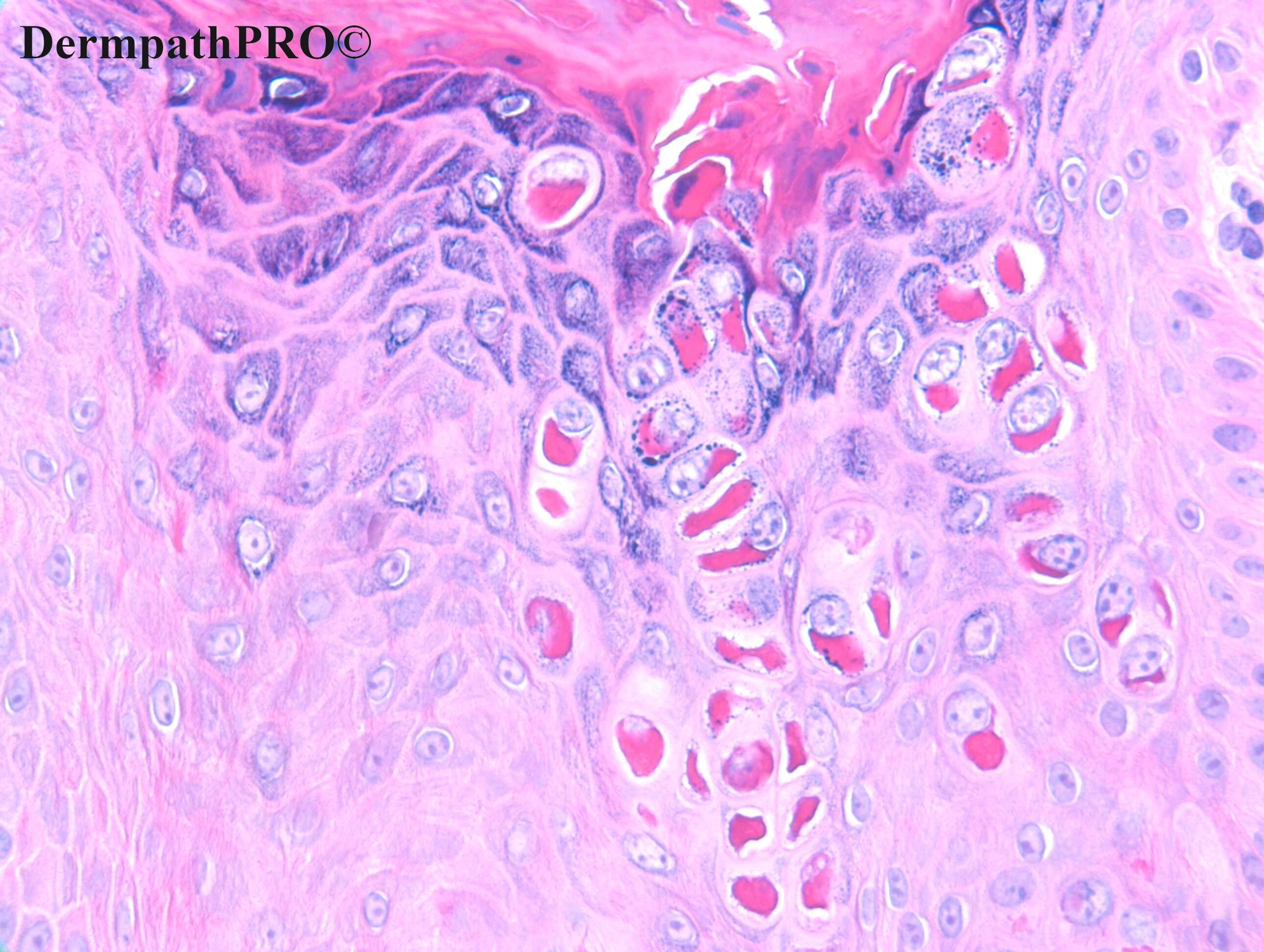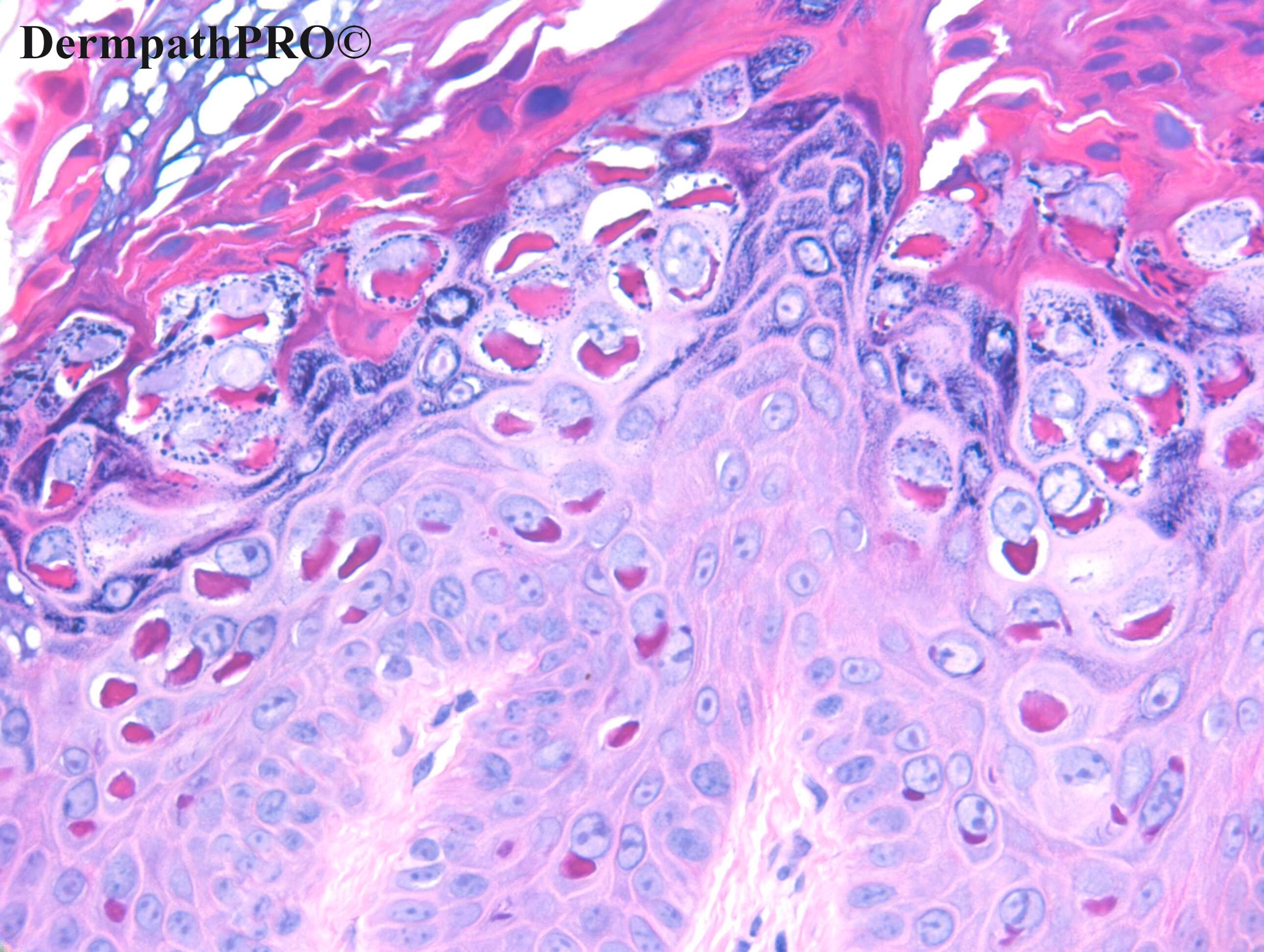Case Number : Case 2677 - 09 October 2020 Posted By: Dr. Richard Carr
Please read the clinical history and view the images by clicking on them before you proffer your diagnosis.
Submitted Date :
F75. Right forearm. Keratotic papules ?hypertrophic AK ?nodular prurigo.





Join the conversation
You can post now and register later. If you have an account, sign in now to post with your account.